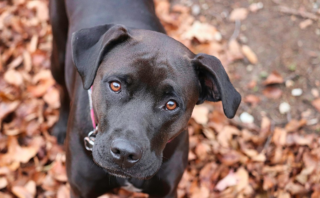Fun Dog Training: 5 Techniques Kids Can Easily Master
Introduction
Dogs are often referred to as man’s best friend, and they can be especially so for children. That’s why teaching kids how to train dogs is crucial. It helps children learn responsibility, empathy, and communication skills. At the same time, dogs learn to behave well, obey commands, and build a strong bond with their young trainers.
Children who get involved in dog training learn important life skills beyond the actual training. They learn about commitment, patience, and the consequences of their actions. It’s a fun and rewarding experience that brings plenty of joy and adds an extra layer to the bond between a child and their pet.

Basic Training Techniques
Training a dog can be a daunting task, but knowing where to start can help. The fundamental technique for dog training is positive reinforcement. This method encourages behaviors you want to see more of in your dog.
When the dog performs a behavior you like, you immediately give a treat or show physical affection. This helps the dog understand what is expected. The technique is easy for children to grasp because they see immediate results, which motivates them to continue the training.
As a parent or guardian, you should guide your child throughout the training process. This can involve showing them how to use commands properly, how to give treats effectively, and understanding a dog’s body language.
Essential Commands
There are several basic commands that every dog should know. These commands are easy to teach and are a good starting point for kids. They include Sit, Stay, Come, Down, and Leave it.
- Sit: This is usually the first command introduced as it’s simple and easy to teach.
- Stay: This command is crucial for the dog’s safety, especially when outside.
- Come: This helps in situations where you need your dog to return to you quickly.
- Down: Similar to Sit, but the dog needs to lie down completely.
- Leave it: This tells the dog to ignore what it’s focused on.
Training Safety
Safety is paramount in dog training, especially when involving kids. Children should be guided and supervised during training sessions. They should be taught to respect the dog’s space and to understand that training should never involve any form of physical punishment.
Knowing the dog’s limits is also important. Some breeds may be more patient and tolerant of children, while others may not be as accommodating. Understand your dog’s limits and adjust the training accordingly.

Frequently Asked Questions
- Can all dog breeds be trained by children?
- Although some dog breeds may have a more patient temperament that makes them easier to train, essentially any dog can be trained by children under adult supervision.
- Is positive reinforcement the only method?
- No, but it is the most suitable for kids. This method helps children and dogs understand each other better and form enjoyable interactions.
- At what age can kids start training dogs?
- This largely depends on the child’s maturity. Generally, kids aged 5 and above can get involved in dog training under adult supervision.
- How long should training sessions last for?
- Ideally, training sessions with your dog should last for about 15-30 minutes. Too long can be exhausting for both the dog and the child.
- What if my child and the dog aren’t getting along?
- Patience is key. It can take time for a child and a dog to understand each other and work cohesively. Remain calm, optimistic, and keep things positive.
Conclusion
Training can be a wonderful way for children and dogs to bond and understand each other better. It imparts important life skills to kids, like patience, responsibility, and positive communication. While it might be challenging at times, the benefits it brings are numerous and long-lasting. Each training session is an opportunity to build a stronger connection between your child and their faithful four-legged friend. With the right guidance, these moments of teaching and learning can be among the most memorable moments in your child’s life.



